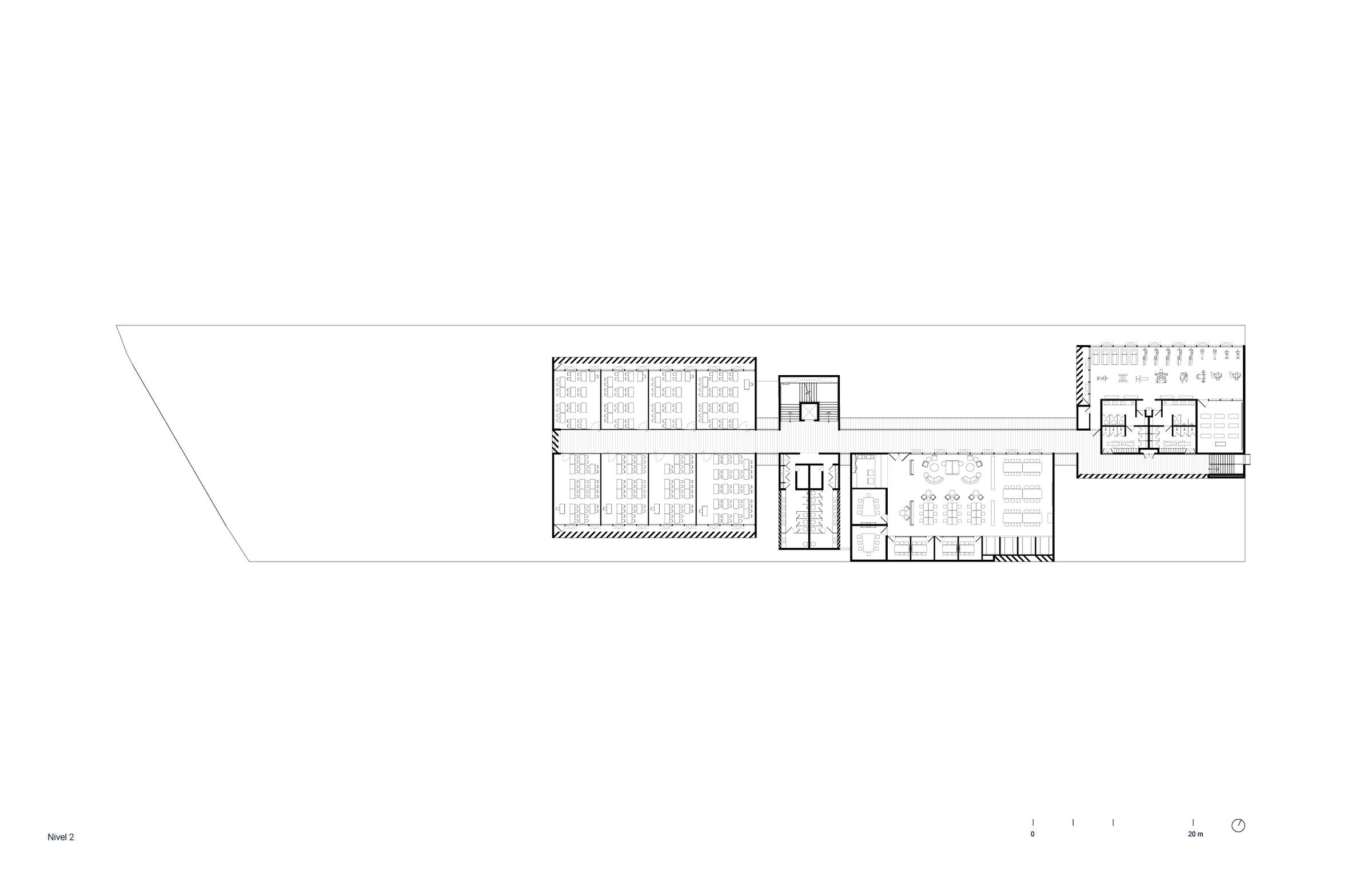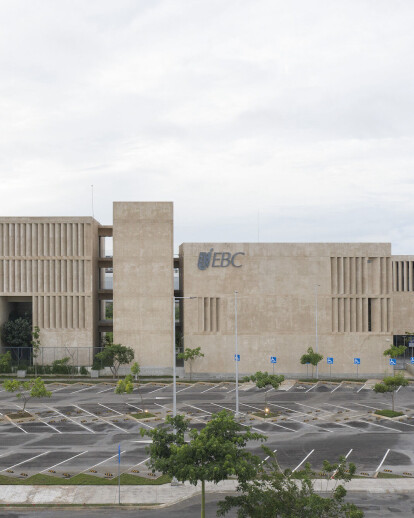The School of Business and Banking is located to the north of Mérida and is the second campus built for this institution in the city. The new building is located in an area experiencing growth and aims to provide educational services to a larger number of students.

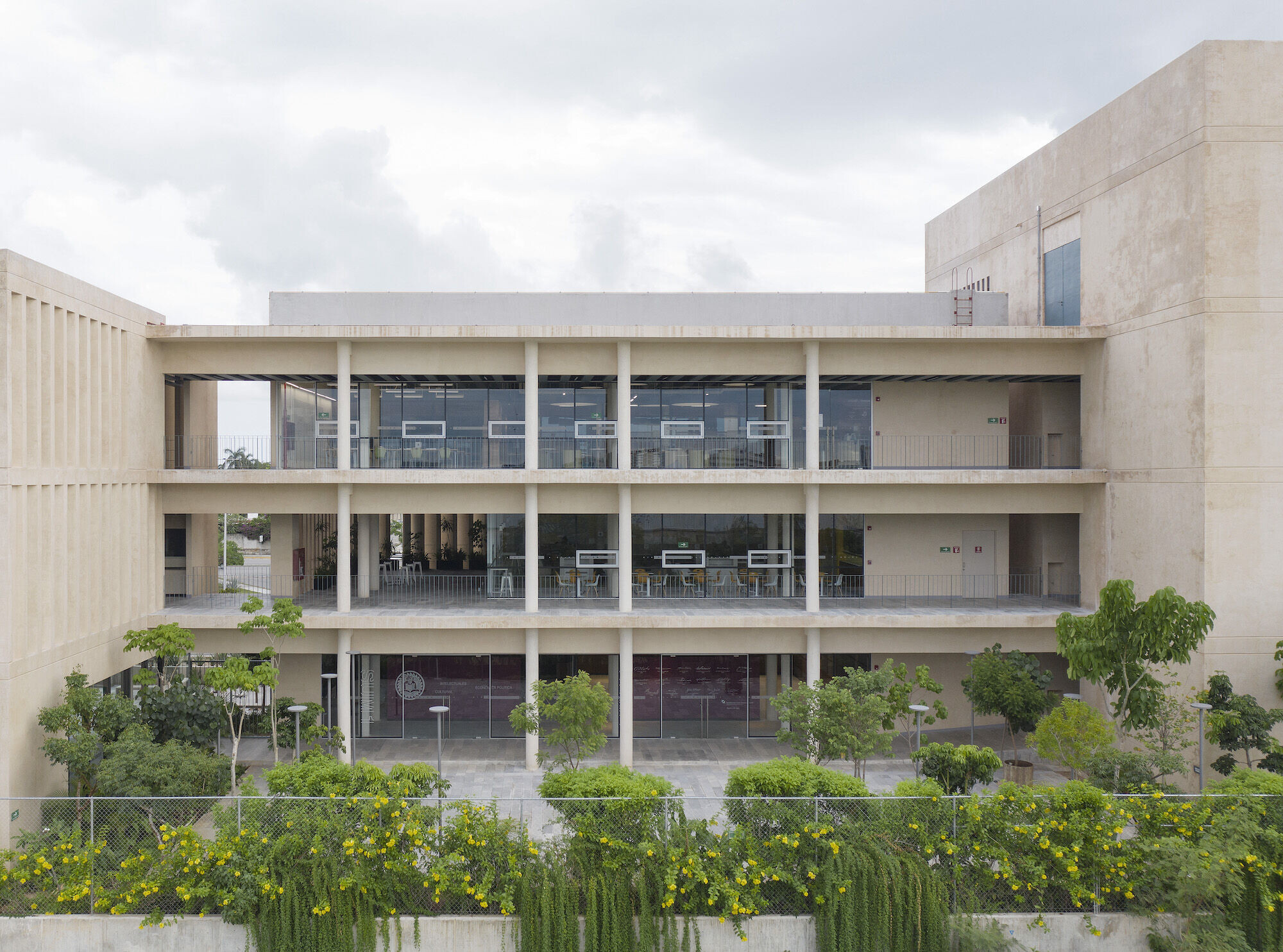
Three specific factors were taken into account in the development of this project that determined the positioning of the building, its material characteristics and its operation: the program, the site, and the climate.

The climate in Mérida is a challenging one, with heat, humidity, and very high temperatures in the direct sun. The rains carried by regular northerly winds are also factors that must be carefully resolved. The overall appearance of the campus—solid and weighty—reflects its orientation and the layout of the uses contained in each volume. The walls are almost entirely blind to the south, east and west, while remaining fully open to the north, thereby avoiding the changing light conditions and high temperatures of this region, and providing uniform luminosity to all the teaching and working spaces. The uniform appearance is thanks to the use of chukum stucco, a traditional local material characterized by its durability and low maintenance.

The brief and program for a campus of this nature is very specific, and had to include 12 classrooms for 18 students, 9 classrooms for 30 students and 7 classrooms for 40 students. In addition, it required teaching rooms for online classes, a 40-seat auditorium, a multipurpose hall that can be configured as a 200-seat auditorium, a cafeteria, a learning center with library and study rooms, a courtyard to host events with the whole student community, a gym, an administrative area and a number of service areas.
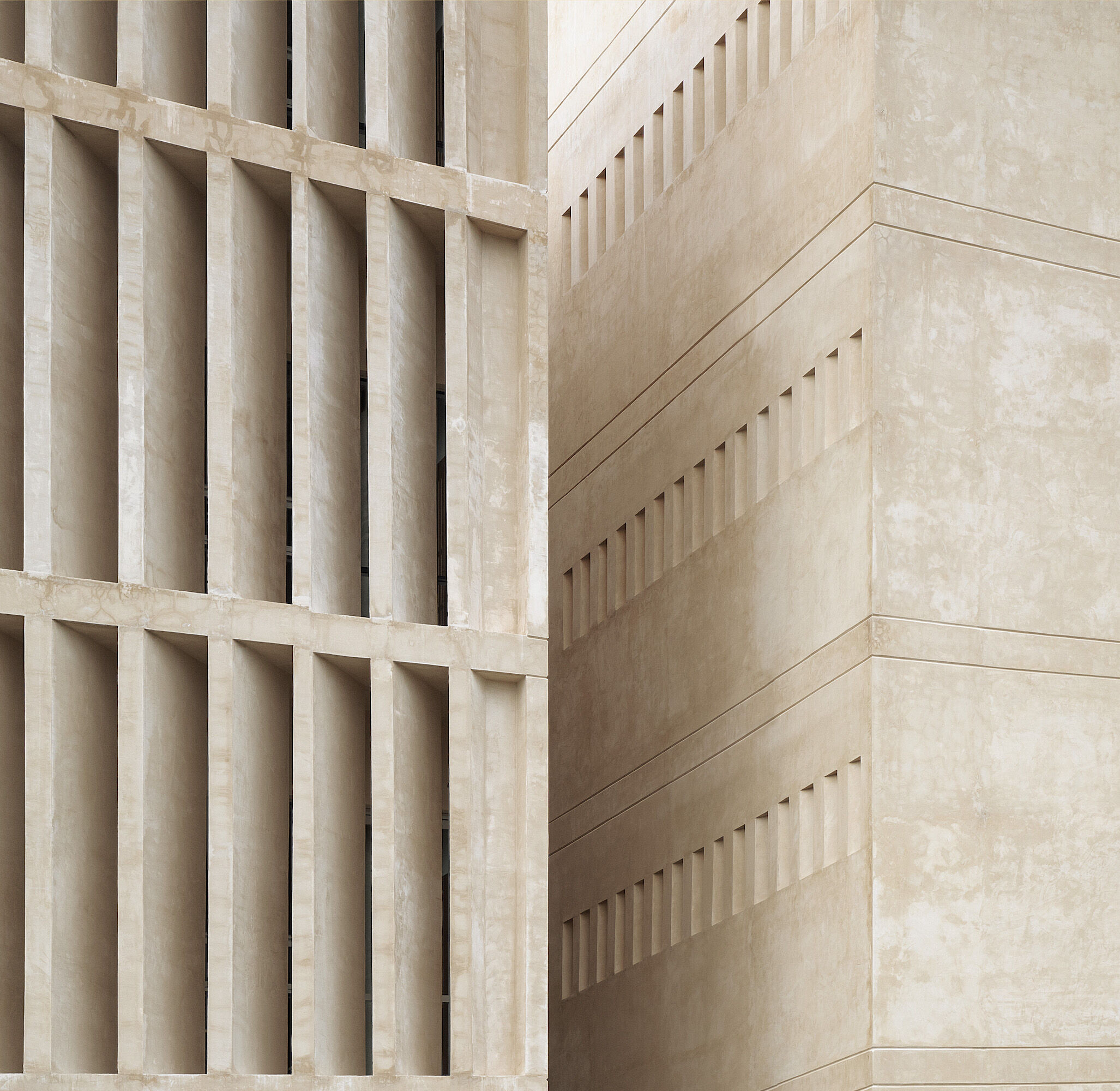
The campus site is a narrow rectangle measuring 30 x 140 m, with roads on three sides and a future adjacent construction on the fourth side. The project is laid out as a series of six buildings that break up the program into blocks. The uses of each building are meticulously distributed to order to activate the public space and provide opportunities for encounter between buildings, thereby modulating the whole campus around multi-use segmentation.

The entrance and administrative area is contained in the first building, while the second is a flexible public building housing the multipurpose hall, the indoor and outdoor cafeteria, and the learning center. This volume is sited in the middle of the campus, with its ground floor opening onto the central plaza and offering social areas on each of its three levels. The third building is both the tallest and the one with the smallest footprint, and contains the services and vertical circulations.
The fourth building houses the 28 classrooms over four levels, while the fifth one, not yet built, is planned as an extension containing nine further classrooms for the future growth of the campus. Currently, its foundations are used as a sports pitch.
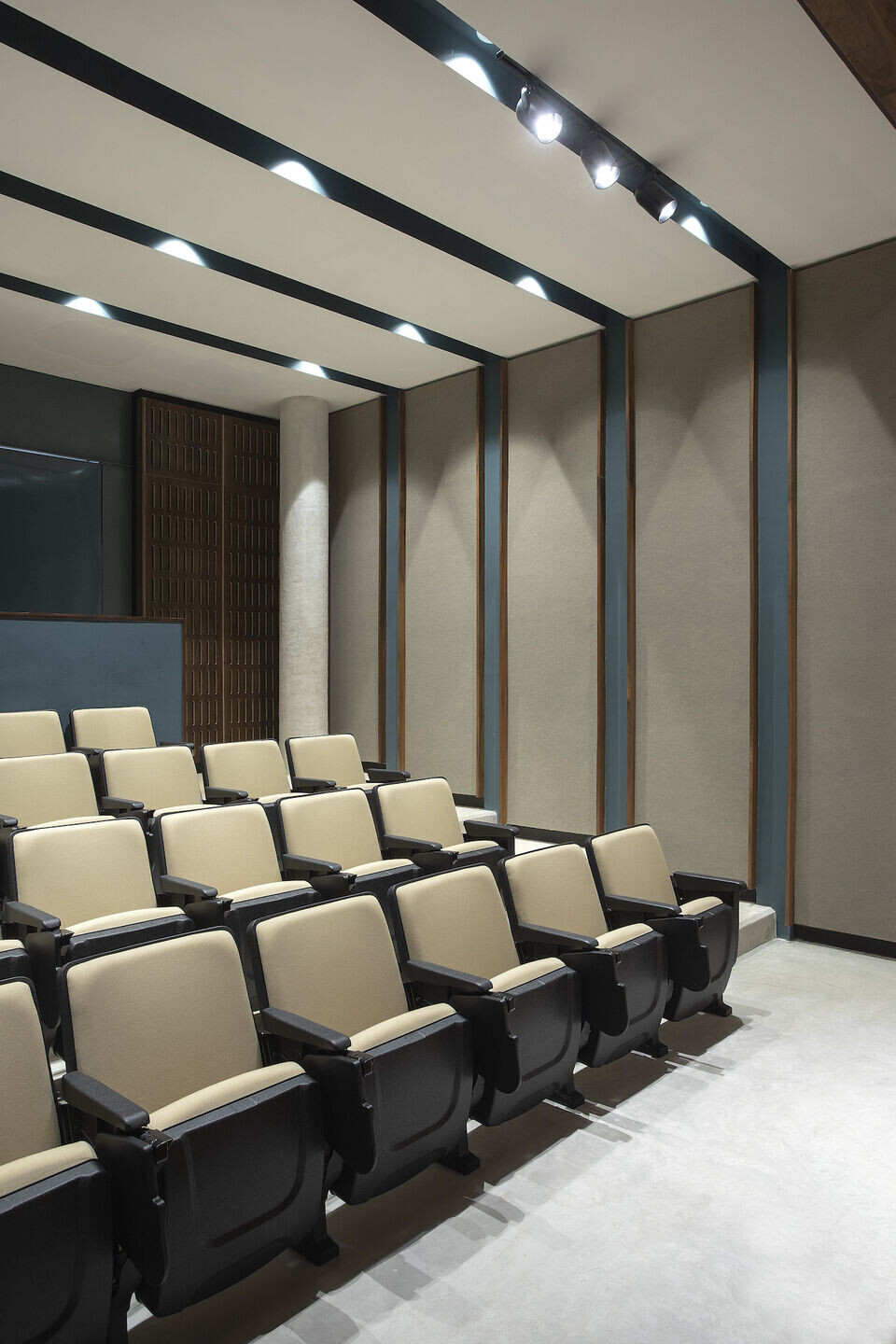
The sixth building is the only one to have a single story, and houses the equipment, machine rooms and maintenance areas for the campus.

The arrangement of these six volumes generates plaza-like spaces that complement the whole complex. The location of these takes note of orientation and solar exposure, with the entire project operating as a wall providing shade for the public areas. The central plaza is an open-air space of encounter that is in shade for most of the day. Meanwhile, the fragmentary character of the volumes ensures the breeze provides cross-ventilation throughout the day, and in the case of strong winds allows them free passage rather than opposing resistance.

The six buildings are arranged around a central axis that connects both the main entrance and the access from the parking lot on the first floor. On upper levels, an uninterrupted linear passageway three meters wide connects each of the volumes by means of bridges, sometimes passing through the center and sometimes along the sides, where it expands to 4.5 meters in width and provides shelter in the rainy season and from the strong northerly winds.
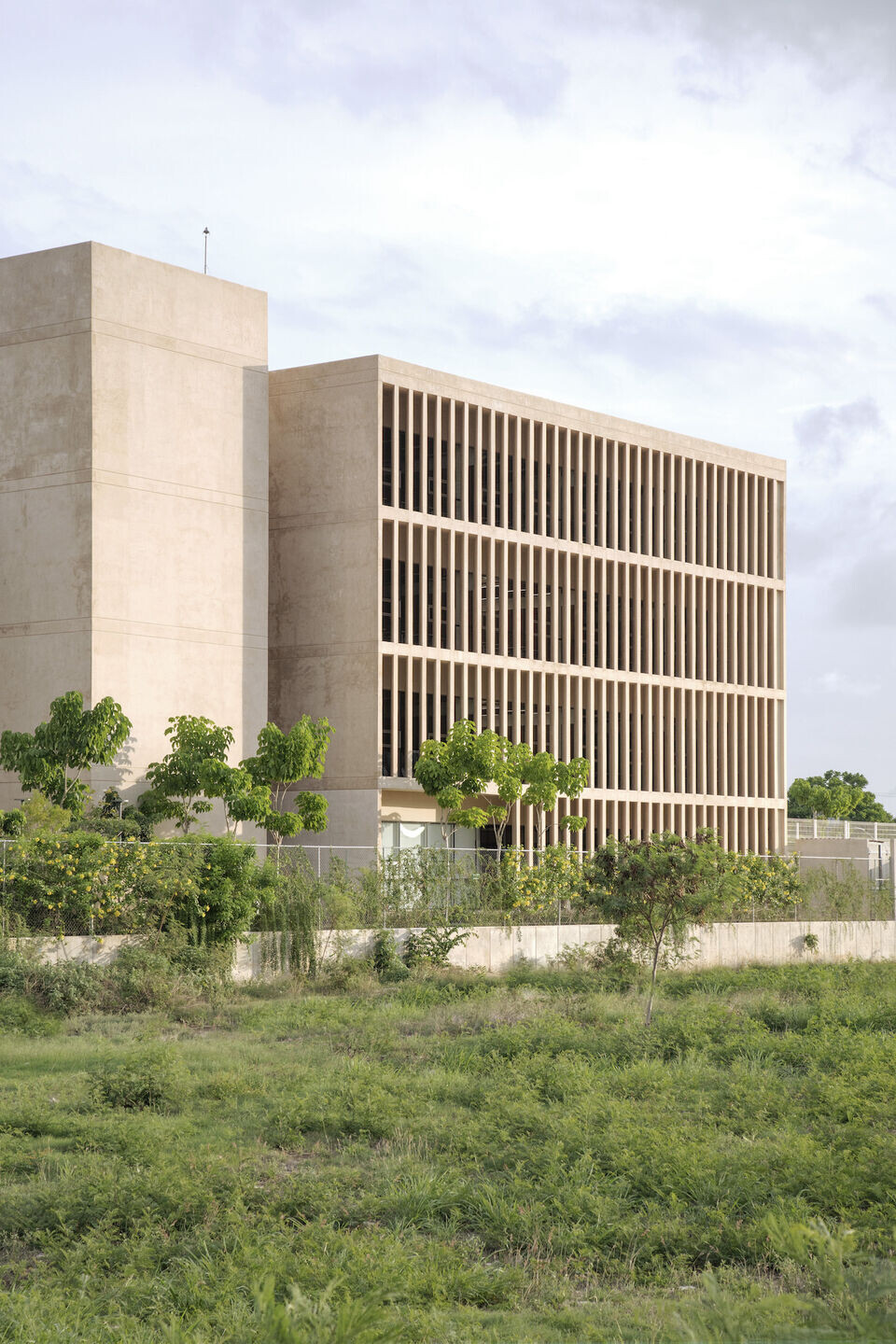
In the recent educational buildings we have designed we have focused our attention not on the built space of the classrooms but on the voids and circulation routes, the spaces that connect the teaching rooms with the specific programs. In this case, this passageway that takes new forms on its path through the campus generates a space of encounter outside of the classrooms.

Team:
Clients: EBC Escuela Bancaria y Comercial
Architects: Ignacio Urquiza Arquitectos
Collaborators: Camilo Moreno (Co-Lateral) y Rodrigo Valenzuela Jerez
Design team: Ignacio Urquiza Seoane, Camilo Moreno, Daniel Moreno, Héctor René Campagna, Michela Lostia di Santa Sofía, Paula Bodelón, León Daniel Chávez, Fabiola Antonini, Andrés Suárez, Andrés Pérez
Structure: Eric Raygoza
Engineers: AKF Group
Landscape: Genfor Landscaping, Tanya Eguiluz
Interior design: Taller Leticia Serrano, Leticia Serrano, Andrea Guereca
Development and construction: EBC (Jerónimo Prieto, Andrea Cornú), Terral (Pablo Prieto, Raúl Silva)
Photo Credits: Estudio Urquiza (Ignacio Urquiza)

